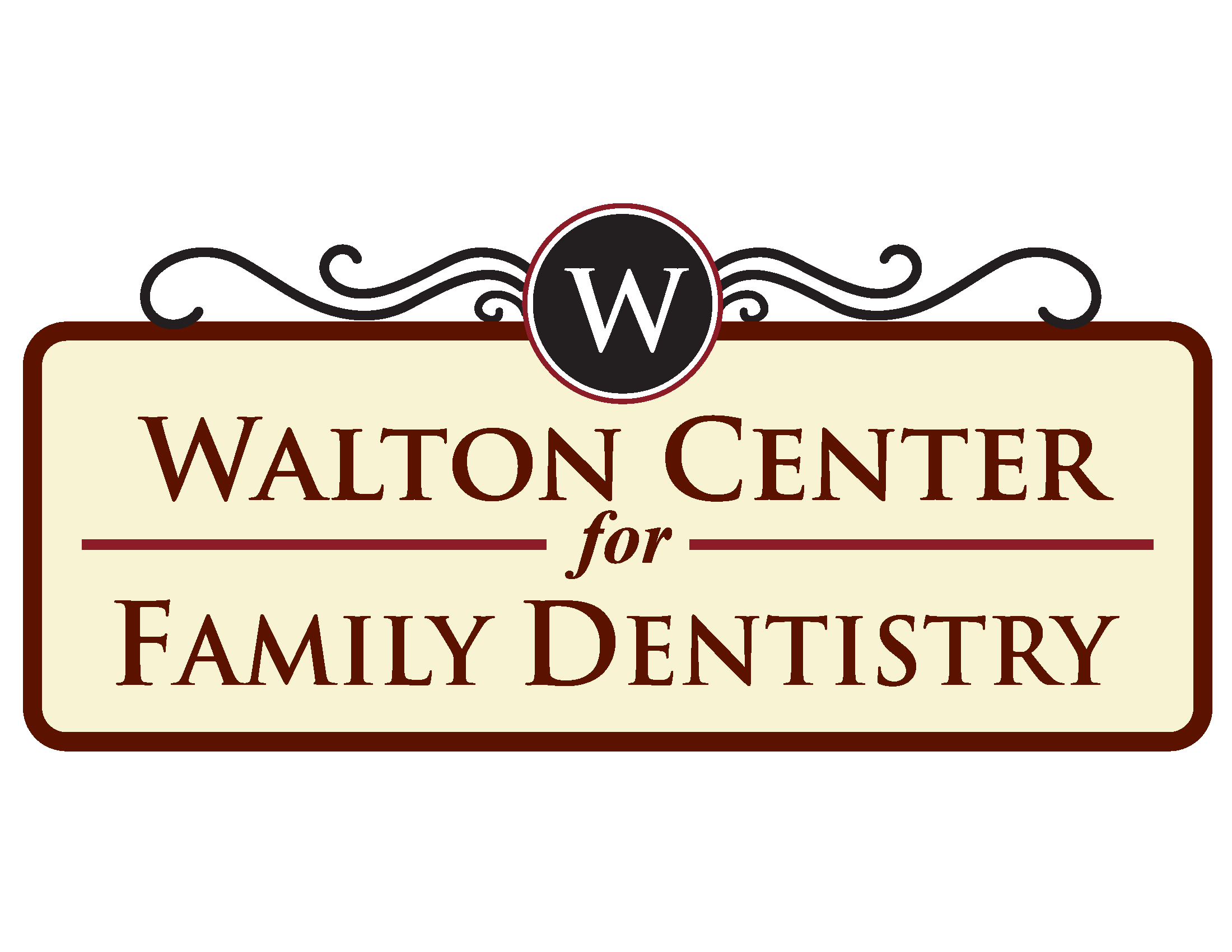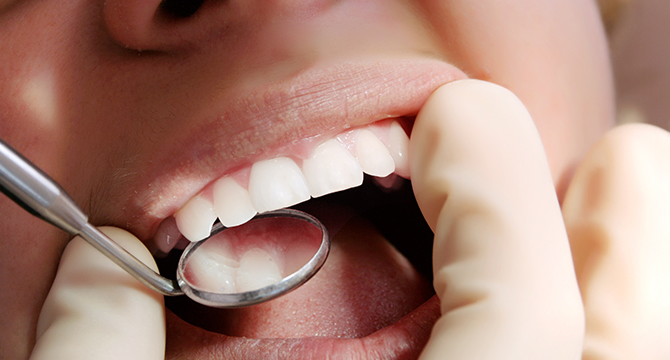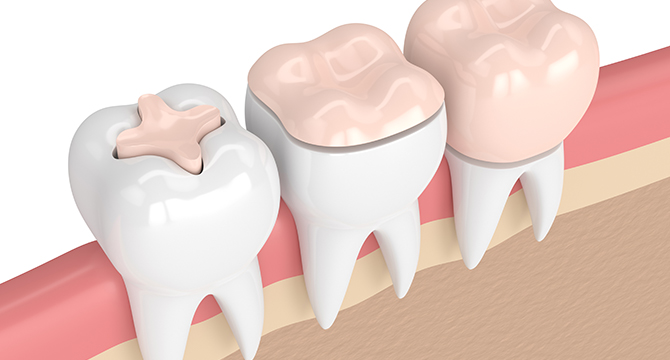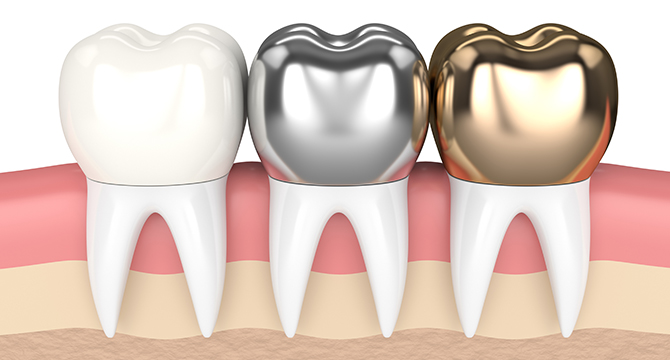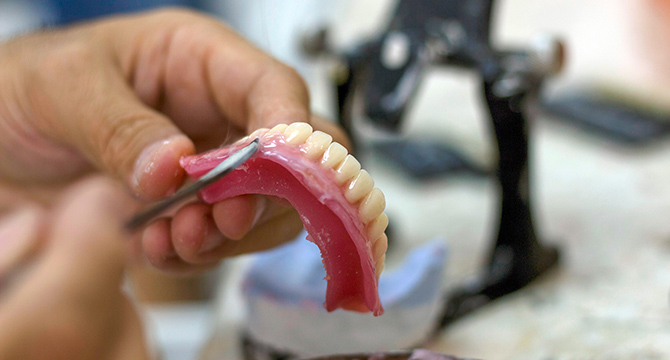If certain dental problems have kept you from eating your favorite foods or smiling with ease, restorative dentistry can help you get your life back. At Walton Center for Family Dentistry, a highly-trained restorative dentist will determine the right corrective dental procedures to restore your natural smile and your confidence.
Corrective Dental Procedures at Walton Center for Family Dentistry
If you’re interested in receiving high-quality corrective dental procedures, our team of hygienists, dentists and specialists will provide you with the excellent care you desire. Combining experience, skill and compassion, we can dramatically improve your smile through a variety of restorative dentistry procedures, such as the ones described in detail below.
Composite Dental Fillings
One of the most common corrective dental procedures performed today, composite dental fillings offer several benefits over traditional silver-colored amalgam fillings. Comprised of a natural-looking glass and composite material, they cosmetically blend in with the rest of your teeth and adhere directly to the tooth’s surface, allowing for less drilling and more of the tooth’s natural structure to remain intact. Although receiving composite dental fillings is a minimally-invasive restorative dentistry procedure, it can make a significant difference in the appearance and health of your smile.
Inlays and Onlays
Sometimes teeth aren’t compromised enough to require a crown, but are still too damaged to be properly restored with just a filling. In these cases, your restorative dentist will likely suggest treatment with an inlay or onlay. An inlay covers the chewing surface in a tooth’s center between the cusps (points), while an onlay will cover one or more damaged cusps. Inlays and onlays are simple, popular restorative dentistry procedures that often prevent teeth from fracturing or needing to be extracted later.
Veneers
Another important part of restorative dentistry, veneers are thin sheets of porcelain or ceramic material. The dentist attaches them to the front of teeth to hide cracks, decays, or discoloration. They can also work for teeth that are uneven. Typically, veneers are best for incisors or front teeth on the top or bottom.
Dental Crowns
If you are missing teeth, dental crowns and bridges might be the best restorative dentistry option for you. If you just have a single missing tooth, the dentist can put an implant into your jaw bone. That is essentially a metal rod that extends up above your gum line. the oral surgeon then places a crown on top of that. You can also use crowns over decayed teeth. In that case, the dentist removes the decay and adds a filling as needed. Then, the dentist places a crown on top of that, so you have the look of a whole new tooth.
Bridges
For patients who are missing multiple teeth, a bridge may be the ideal answer. Generally, a bridge fills the space created by one or more missing teeth. It is made up of two more more crowns – one on each side of the missing tooth. The anchoring teeth are called abutments, and the false tooth/teeth replacing the missing space is called the pontic. It is important to remember that it’s a permanent restorative dentistry solution. It’s not something that you remove in the evening.
Dentures
When bridges aren’t the right option, dentures may be something to consider. Just like other realms of dentistry, dentures have come a long way over the years. As explained above, there are permanent replacement options. There are also removable partial dentures and full dentures.
What to Expect With Restorative Dentistry
Generally, the process starts with a consultation in our office. At that point, the dentist examines your teeth and lets you know what the options are. You can ask questions and get the information you need to understand the best treatment for your needs. You will then make a follow up appointment for the work to be performed.
In some cases such as when you are getting veneers, the work can happen in a single appointment, but in a lot of cases, it takes two additional appointments after the consultation. During the first appointment, the dentist takes care of decay and creates a mold for the bridge, denture, or crown. Then, the mold is sent to a lab where those elements are expertly crafted. During the second follow up appointment, the new dental work is fitted into your mouth, and the dentist makes adjustments as needed.
Appointments for Restorative Dentistry
If you are ready to restore your smile, we are ready to help. At Walton Center for Family Dentistry, we offer a full range of dental treatments from cosmetic dentistry to oral surgery.
